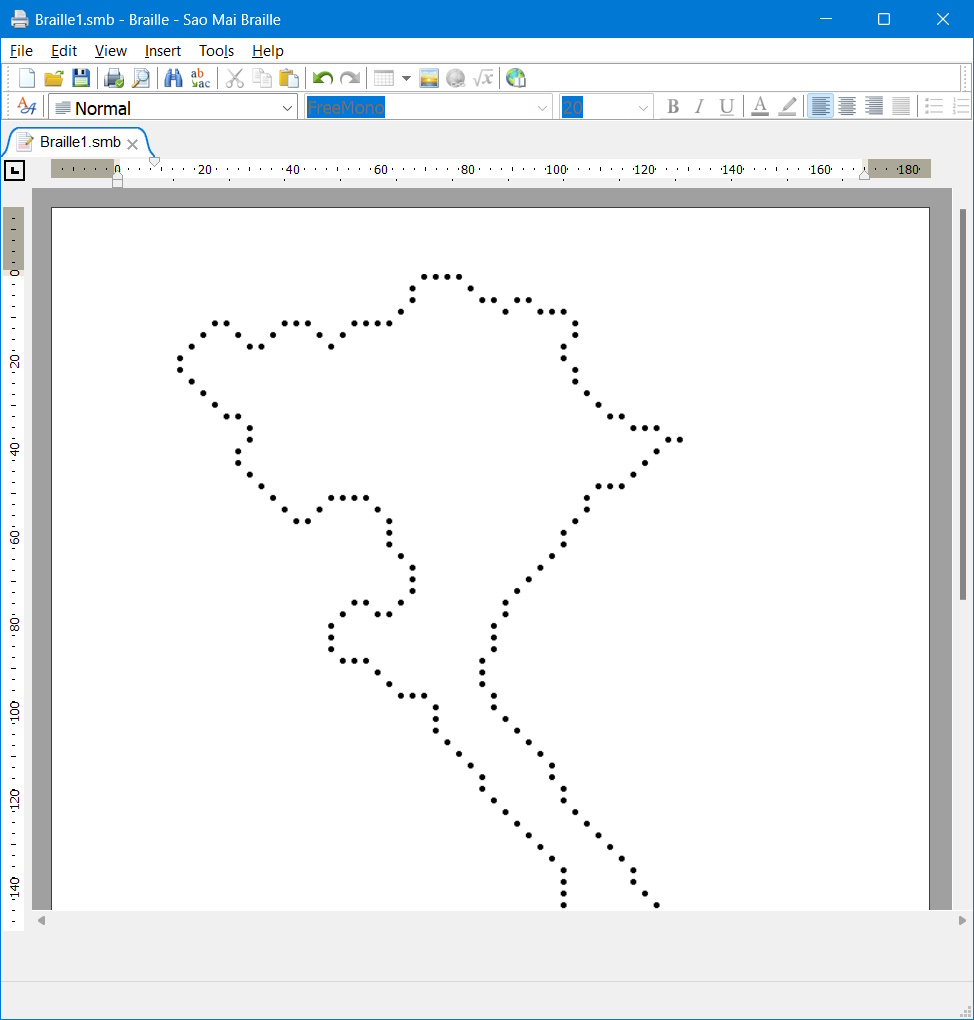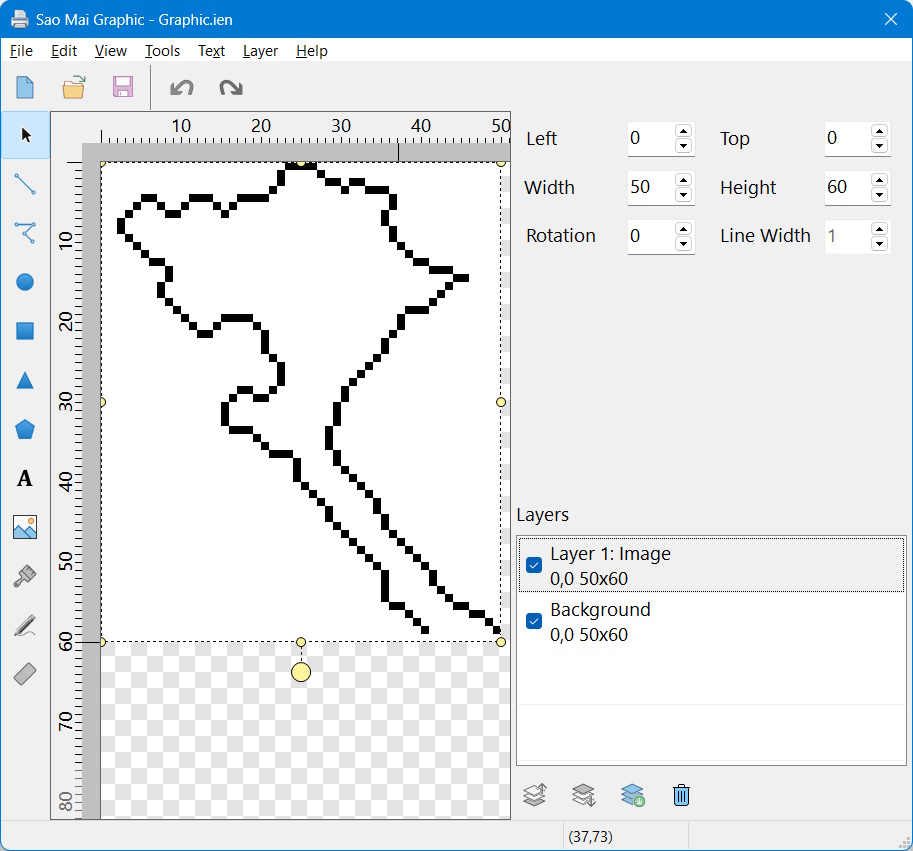
To celebrate World Braille Day on January 4th, the birthday of Louis Braille, a blind person who invented the Braille writing system, we are pleased to announce the release of Sao Mai Braille (SMB) software version 24.1.4. SMB is created to provide a unified solution in the Braille conversion process for text, images, mathematics, and music.
The "SM Music Braille" translation software library has been renamed to "SM-BungSang", with our gratitude expression to commemorate the contributions of the Teachers, Colleagues, and Friends who paved the way from the Bung Sang Club and the Bung Sang Computer Project back to the years before 2002. These were the solid foundation stones for the Sao Mai Center for the Blind to be established, developed, and to have served the visually impaired community for over 20 years.
Some notable new features and improvements in this Sao Mai Braille version include: the tool for drawing, image editing, and conversion to tactile graphics; reading mathematical expressions in Traditional Chinese and significant improvements for UEB and Vietnamese Braille math; upgrading to the SM-BungSang 24.1 music translation library with new features supporting advanced music scores and complex musical notations, applying separate music settings profile for scores; several updates to Braille translation tables for English and Hungarian; new find and replace dialogues with 6-key Braille input; and numerous improvements and important bug fixes.
Below is detailed information about the changes in the SMB 24.1 release.
Tactile Graphics

We sincerely thank ON-NET (Overbrook-Nippon Network on Educational Technology) for sponsoring the development of the image editing and tactile graphic translation features (2023).
Besides the function of inserting and displaying images in the print document, now, SMB 24.1 fully supports the process of drawing, editing and converting images into tactile graphics. SMB integrates the Sao Mai Graphics (SMG), a tool for drawing and editing images. The SMG tool can be also downloaded, installed, and run as a standalone application.
By default, SMB will ignore all images when converting from print to Braille. To change relevant settings, go to the Tools menu, open the Options dialogue, and choose the Tactile Graphics page.
When an image is inserted directly into a Braille document or translated into Braille from a print document, the image will be converted to black and white.
To insert a picture:
- Open the Insert menu and select Picture, or press Alt+F10.
- Choose an image and add it to the document. If inserting an image into a Braille document, a dialog box will appear to adjust brightness and darkness.
After completing the insertion, as in the print document, press Alt+Enter on the image to open the Image Properties dialogue, allowing customization of some basic settings and providing alternate text.
If the focus is in the Braille document, press Alt+Enter on the image to open the SMG tool, allowing you to edit the image.
The interface of the tool is fully accessible for screen reading users and entirely intuitive for all users. Please refer to the User Guide for more detailed instructions.
Mathematics
- Initial support of CMU - the braille code used in Spanish and Portuguese speaking countries.
- UEB Braille: added auxiliary parenthesis in some cases, added new characters for UEB, and fixed some bugs.
- Significant improvements to Vietnamese math and chemistry braille.
- Fixed bug with navigating into the base of a scripted expression that has parenthesis.
- Significantly changed the way whitespace is handled. This mainly affects braille output (spaces and "omission" detection).
- Improved recognition of chemistry.
- Added Traditional Chinese translation for speech.
- Improvements to Vietnamese speech.
- Fix Roman numeral detection.
- Fixed some navigation bugs when AutoZoomOut is False (not the default).
- Fix whitespace bug in HTML inside of tokens.
- Several improvements for cleaning up poor MathML code.
Music
- Added an option to indicate the start and stop of a slur on the same note. The option is in the Transcription page in Options dialogue -> Music Braille.
- Added option to convert line breaks of direction text to spaces. This will interpret multiline text into a single-line text. The option is in the Text Direction page, in Options dialogue -> Music Braille.
- Supported to translate each score in a document with a different music settings profile. This is helpful for cases like translating a music textbook in which scores might prefer to have different formats or translation rules. To apply, open Score info dialogue, select a score from the Score list and choose a profile in the "Music profile" list next to it.
- Added Description field in Music Braille’s Profile page in Options dialogue. From the profile list, use arrow keys to a profile and press Enter to select.
- Increased to 20 Braille characters allowed to input for the Braille part abbreviation, staff name and instrument abbreviation in Score Info dialogue.
- Part tab is selected by default when navigating in Score Info dialogue.
- The breve note will be indicated by dot 45-14 connecting between two normal whole notes. For example, C breve will be: ⠽⠘⠉⠽.
- Improved some rules for indicating the value signs.
- Fixed an issue of not correctly indicating the accidentals for the degree and bass notes in chord symbols.
- Upgraded the doubling function, allowing for doubling multiple signs at the same time.
- Fixed the error of indicating an unnecessary octave sign after a single trill line.
- Fixed several issues of not doubling intervals and unnecessarily re-indicating the octave sign when enabling the backward-numeral or measure-number repeats.
- Upgraded the repeating function in all four modes: part-measure, full-measure, backward-numeral, and measure-number repeats. Additionally, the performance of backward-numeral and measure-number repeats has been significantly improved.
- Supported repeating and doubling functions simultaneously. Optimized the algorithm to save Braille cells when both repeating and doubling cases happen.
- Handled the combination of multiple measure rests in all transcription modes. Combining multiple measure rests is no longer a feature of the full-measure repeat option. Fixed alignment bugs of bar-over-bar format for some cases of combining measure rests.
- Fixed an error of missing notes when the first staff is hidden, and tempo text is on staff 2.
Other Changes
- New Find and Replace dialogues: support to find next, find previous, replace one by one and replace all. Screen readers announce the status of results. Additionally, it supports to input text in 6-key Braille input method with either Ascii or Unicode Braille.
- Added an option to automatically remove blank lines at the beginning of the braille pages when embossing or saving as BRF, BRL, BRA, and PEF files.
- Updated to LibLouis 3.28.
- Fixed an issue of an extra blank page when the page break character coincides with the translation point to a new braille page.
- Fixed a bug that added dot 3 in the Braille window when pressing Ctrl+S to save.
- In the braille window, pressing F4 will read the translation table filename of the current content if different from the default table.
- The screen reader no longer reads "delete" when typing in Vietnamese.
- In the Options dialog, pressing F6 will move between the left pane for selecting configuration page and the right pane for settings of the selected configuration page. If the right pane is divided into multiple configuration option groups, pressing F6 will move to the groups before switching to the left pane.
- In the braille window, the status bar displays additional information indicating whether the braille code is Unicode or ASCII.
- Fixed an issue when translating some data tables from MS Word files.
- Added support for translating MS Word table of contents in the style of SMB.
- Numerous improvements for translating content in the header and footer of an MS Word document.
- Removed the option "as LibLouis" in the Display Braille Code combo box in the Translation Tables page in the Options dialog.
- Audible notification while waiting for the program to perform translation tasks.
- Fixed error when activating the Customize button in Bullets and Numbering dialogue. Screen readers should speak hex value of the selected bullet symbol.
- Announced link when navigating with up and down arrow keys.
Share via:
EmailFacebookTwitterGoogleLinkedin


